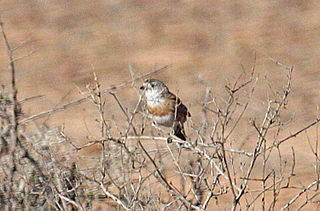
The chasers, darters, skimmers and perchers and their relatives form the Libellulidae, the largest family of dragonflies. It is sometimes considered to contain the Corduliidae as the subfamily Corduliinae and the Macromiidae as the subfamily Macromiinae. Even if these are excluded, there remains a family of over 1000 species. With nearly worldwide distribution, these are almost certainly the most often seen of all dragonflies.

The red-veined darter or nomad is a dragonfly of the genus Sympetrum.

Sympetrum is a genus of small to medium-sized skimmer dragonflies, known as darters in the UK and as meadowhawks in North America. The more than 50 species predominantly live in the temperate zone of the Northern Hemisphere; 15 species are native to North America. No Sympetrum species is native to Australia.

Sympetrum danae, the black darter or black meadowhawk, is a dragonfly found in northern Europe, Asia, and North America. At about 30 mm (1.2 in) long, it is Britain's smallest resident dragonfly. It is a very active late summer insect typical of heathland and moorland bog pools.

Aphelocephala is a genus of bird in the thornbill family Acanthizidae. The three species are collectively known as whitefaces. They are endemic to Australia, generally occurring in the arid centre of the continent. They are a striking looking bird, particularly compared to their duller looking relatives, having dark upperparts and white breasts and faces. Two species, the chestnut-breasted and banded whitefaces, break up the white undersides with a darker band. The three species have stubby bills and unlike the rest of the Acanthizidae they consume large numbers of seeds in their diet.

Leucorrhinia is a genus of dragonfly in the family Libellulidae. They are commonly called whitefaces because of their distinctive pale frons.

Leucorrhinia caudalis, the lilypad whiteface, is a species of dragonfly in the family Libellulidae. It is found in Austria, Belarus, Belgium, Croatia, the Czech Republic, Denmark, Estonia, Finland, France, Germany, Hungary, Latvia, Lithuania, Luxembourg, the Netherlands, Norway, Poland, Russia, Serbia and Montenegro, Slovenia, Sweden, and Ukraine. Its natural habitats are swamps and freshwater lakes. It is threatened by habitat loss.

The white-faced darter or small whiteface is a dragonfly belonging to the genus Leucorrhinia in the family Libellulidae, characterised by red and black markings and a distinctive white patch on the head. It is found in wetlands and peat bogs from northern Europe eastwards to Siberia, and the adults are active from around April till September, which is known as the "flight period". It breeds in acidic bodies of water, laying its eggs in clumps of sphagnum moss that provide a safe habitat for larval development. The larvae are particularly vulnerable to predation by fish, and so are usually found in lakes where fish are not present. L. dubia is listed as a species of least concern (LC) by the IUCN Red List, however, it is potentially threatened by habitat destruction, pollution, and climate change.

The dot-tailed whiteface is a species of dragonfly in the family Libellulidae. It is also one of the most common and widespread in the genus Leucorrhinia.

The Hudsonian whiteface is a species of dragonfly in the family Libellulidae. Its common name comes from where it is found, Hudson Bay.

Black Lake is a nature reserve in Delamere Forest, Cheshire, England. It lies in the southwestern corner of the forest, just south of the Manchester–Chester railway. It is managed by the Cheshire Wildlife Trust (CWT) on behalf of the Forestry Commission, and as a Site of Special Scientific Interest (SSSI) is monitored by Natural England.

The northern white-faced darter or the ruby whiteface is a dragonfly found in Europe as far east as the Altai Mountains. It is predominantly northern in its distribution, being one of the few dragonflies common north of the Arctic Circle. Its most southerly location is Northern Belgium and it is found through Germany, Poland, Czech Republic, Fennoscandia, Belarus, Ukraine and Russia.

Vestiena is protected landscape in Ērgļi Municipality and Madona Municipality, approximately from Ērgļi Parish in the west to village Zelgauska in the east. The territory was established to preserve and protect the Vidzeme Highlands landscape and natural diversity. This is a Natura 2000 site.

Ādaži was established in 2004 as a protected landscape in Ādaži and Saulkrasti municipalities of Latvia. Pierīga, Gauja is on the right bank of the lower reaches Ādaži military poligone and its adjacent territories. The area was created to preserve Latvia's rare habitats created during military training - dry heaths and open inland dunes with sand dune meadows, bluish meadow meadows and mesotrophic lakes, as well as a significant number of specially protected plant and animal species. The area also includes the Lieluika and Mazuika lakes nature reserve. Lake Mazuika is recognized as a benchmark for a clear water lake in the Baltic region. Natura 2000 territory.

Talsi rolling hills is a nature park in the middle of Talsi Municipality. It is located in the north-western part of Vanemas pauguraine and includes the highest part, administratively belongs to Laidzes, Laucienes and Lībagu parishes. The protected area was established in 1987 to protect one of the North Kurzeme Uplands and highest part of the Elder Hill. It is most diverse areas in terms of natural conditions in the Latvia north-east, with a distinctly hilly terrain and several small but deep lakes. Scenic area. Natura 2000 territory. Many Latvia rare and protected plant and animal species. In total 24 species of flora (1) and fauna (23) are protected under EU Nature directives.















